-
EXECUTIVE SUMMARY
-
Market Overview
-
Key Findings
-
Market Segmentation
-
Competitive Landscape
-
Challenges and Opportunities
-
Future Outlook
-
MARKET INTRODUCTION
-
Definition
-
Scope of the study
- Research Objective
- Assumption
- Limitations
-
RESEARCH METHODOLOGY
-
Overview
-
Data Mining
-
Secondary Research
-
Primary Research
- Primary Interviews and Information Gathering Process
- Breakdown of Primary Respondents
-
Forecasting Model
-
Market Size Estimation
- Bottom-Up Approach
- Top-Down Approach
-
Data Triangulation
-
Validation
-
MARKET DYNAMICS
-
Overview
-
Drivers
-
Restraints
-
Opportunities
-
MARKET FACTOR ANALYSIS
-
Value chain Analysis
-
Porter's Five Forces Analysis
- Bargaining Power of Suppliers
- Bargaining Power of Buyers
- Threat of New Entrants
- Threat of Substitutes
- Intensity of Rivalry
-
COVID-19 Impact Analysis
- Market Impact Analysis
- Regional Impact
- Opportunity and Threat Analysis
-
AUTOMOTIVE LIGHTING MARKET, BY APPLICATION (USD BILLION)
-
Exterior Lighting
-
Interior Lighting
-
Signaling Lighting
-
Accent Lighting
-
AUTOMOTIVE LIGHTING MARKET, BY TECHNOLOGY (USD BILLION)
-
Halogen
-
LED
-
Xenon
-
Laser
-
AUTOMOTIVE LIGHTING MARKET, BY VEHICLE TYPE (USD BILLION)
-
Passenger Cars
-
Commercial Vehicles
-
Two Wheelers
-
Buses
-
AUTOMOTIVE LIGHTING MARKET, BY END USE (USD BILLION)
-
OEM
-
Aftermarket
-
AUTOMOTIVE LIGHTING MARKET, BY REGIONAL (USD BILLION)
-
North America
- US
- Canada
-
Europe
- Germany
- UK
- France
- Russia
- Italy
- Spain
- Rest of Europe
-
APAC
- China
- India
- Japan
- South Korea
- Malaysia
- Thailand
- Indonesia
- Rest of APAC
-
South America
- Brazil
- Mexico
- Argentina
- Rest of South America
-
MEA
- GCC Countries
- South Africa
- Rest of MEA
-
COMPETITIVE LANDSCAPE
-
Overview
-
Competitive Analysis
-
Market share Analysis
-
Major Growth Strategy in the Automotive Lighting Market
-
Competitive Benchmarking
-
Leading Players in Terms of Number of Developments in the Automotive Lighting Market
-
Key developments and growth strategies
- New Product Launch/Service Deployment
- Merger & Acquisitions
- Joint Ventures
-
Major Players Financial Matrix
- Sales and Operating Income
- Major Players R&D Expenditure. 2023
-
COMPANY PROFILES
-
Gentex
- Financial Overview
- Products Offered
- Key Developments
- SWOT Analysis
- Key Strategies
-
FedralMogul
- Financial Overview
- Products Offered
- Key Developments
- SWOT Analysis
- Key Strategies
-
Magneti Marelli
- Financial Overview
- Products Offered
- Key Developments
- SWOT Analysis
- Key Strategies
-
Valeo
- Financial Overview
- Products Offered
- Key Developments
- SWOT Analysis
- Key Strategies
-
Philips
- Financial Overview
- Products Offered
- Key Developments
- SWOT Analysis
- Key Strategies
-
Aisin Seiki
- Financial Overview
- Products Offered
- Key Developments
- SWOT Analysis
- Key Strategies
-
LG Innotek
- Financial Overview
- Products Offered
- Key Developments
- SWOT Analysis
- Key Strategies
-
Hella
- Financial Overview
- Products Offered
- Key Developments
- SWOT Analysis
- Key Strategies
-
Koito Manufacturing
- Financial Overview
- Products Offered
- Key Developments
- SWOT Analysis
- Key Strategies
-
Aptiv
- Financial Overview
- Products Offered
- Key Developments
- SWOT Analysis
- Key Strategies
-
Stanley Electric
- Financial Overview
- Products Offered
- Key Developments
- SWOT Analysis
- Key Strategies
-
OSRAM
- Financial Overview
- Products Offered
- Key Developments
- SWOT Analysis
- Key Strategies
-
Lear Corporation
- Financial Overview
- Products Offered
- Key Developments
- SWOT Analysis
- Key Strategies
-
Nippon Seiki
- Financial Overview
- Products Offered
- Key Developments
- SWOT Analysis
- Key Strategies
-
TYC Brother
- Financial Overview
- Products Offered
- Key Developments
- SWOT Analysis
- Key Strategies
-
APPENDIX
-
References
-
Related Reports
-
LIST OF TABLES
-
LIST OF ASSUMPTIONS
-
NORTH AMERICA AUTOMOTIVE LIGHTING MARKET SIZE ESTIMATES & FORECAST, BY APPLICATION, 2019-2035 (USD BILLIONS)
-
NORTH AMERICA AUTOMOTIVE LIGHTING MARKET SIZE ESTIMATES & FORECAST, BY TECHNOLOGY, 2019-2035 (USD BILLIONS)
-
NORTH AMERICA AUTOMOTIVE LIGHTING MARKET SIZE ESTIMATES & FORECAST, BY VEHICLE TYPE, 2019-2035 (USD BILLIONS)
-
NORTH AMERICA AUTOMOTIVE LIGHTING MARKET SIZE ESTIMATES & FORECAST, BY END USE, 2019-2035 (USD BILLIONS)
-
NORTH AMERICA AUTOMOTIVE LIGHTING MARKET SIZE ESTIMATES & FORECAST, BY REGIONAL, 2019-2035 (USD BILLIONS)
-
US AUTOMOTIVE LIGHTING MARKET SIZE ESTIMATES & FORECAST, BY APPLICATION, 2019-2035 (USD BILLIONS)
-
US AUTOMOTIVE LIGHTING MARKET SIZE ESTIMATES & FORECAST, BY TECHNOLOGY, 2019-2035 (USD BILLIONS)
-
US AUTOMOTIVE LIGHTING MARKET SIZE ESTIMATES & FORECAST, BY VEHICLE TYPE, 2019-2035 (USD BILLIONS)
-
US AUTOMOTIVE LIGHTING MARKET SIZE ESTIMATES & FORECAST, BY END USE, 2019-2035 (USD BILLIONS)
-
US AUTOMOTIVE LIGHTING MARKET SIZE ESTIMATES & FORECAST, BY REGIONAL, 2019-2035 (USD BILLIONS)
-
CANADA AUTOMOTIVE LIGHTING MARKET SIZE ESTIMATES & FORECAST, BY APPLICATION, 2019-2035 (USD BILLIONS)
-
CANADA AUTOMOTIVE LIGHTING MARKET SIZE ESTIMATES & FORECAST, BY TECHNOLOGY, 2019-2035 (USD BILLIONS)
-
CANADA AUTOMOTIVE LIGHTING MARKET SIZE ESTIMATES & FORECAST, BY VEHICLE TYPE, 2019-2035 (USD BILLIONS)
-
CANADA AUTOMOTIVE LIGHTING MARKET SIZE ESTIMATES & FORECAST, BY END USE, 2019-2035 (USD BILLIONS)
-
CANADA AUTOMOTIVE LIGHTING MARKET SIZE ESTIMATES & FORECAST, BY REGIONAL, 2019-2035 (USD BILLIONS)
-
EUROPE AUTOMOTIVE LIGHTING MARKET SIZE ESTIMATES & FORECAST, BY APPLICATION, 2019-2035 (USD BILLIONS)
-
EUROPE AUTOMOTIVE LIGHTING MARKET SIZE ESTIMATES & FORECAST, BY TECHNOLOGY, 2019-2035 (USD BILLIONS)
-
EUROPE AUTOMOTIVE LIGHTING MARKET SIZE ESTIMATES & FORECAST, BY VEHICLE TYPE, 2019-2035 (USD BILLIONS)
-
EUROPE AUTOMOTIVE LIGHTING MARKET SIZE ESTIMATES & FORECAST, BY END USE, 2019-2035 (USD BILLIONS)
-
EUROPE AUTOMOTIVE LIGHTING MARKET SIZE ESTIMATES & FORECAST, BY REGIONAL, 2019-2035 (USD BILLIONS)
-
GERMANY AUTOMOTIVE LIGHTING MARKET SIZE ESTIMATES & FORECAST, BY APPLICATION, 2019-2035 (USD BILLIONS)
-
GERMANY AUTOMOTIVE LIGHTING MARKET SIZE ESTIMATES & FORECAST, BY TECHNOLOGY, 2019-2035 (USD BILLIONS)
-
GERMANY AUTOMOTIVE LIGHTING MARKET SIZE ESTIMATES & FORECAST, BY VEHICLE TYPE, 2019-2035 (USD BILLIONS)
-
GERMANY AUTOMOTIVE LIGHTING MARKET SIZE ESTIMATES & FORECAST, BY END USE, 2019-2035 (USD BILLIONS)
-
GERMANY AUTOMOTIVE LIGHTING MARKET SIZE ESTIMATES & FORECAST, BY REGIONAL, 2019-2035 (USD BILLIONS)
-
UK AUTOMOTIVE LIGHTING MARKET SIZE ESTIMATES & FORECAST, BY APPLICATION, 2019-2035 (USD BILLIONS)
-
UK AUTOMOTIVE LIGHTING MARKET SIZE ESTIMATES & FORECAST, BY TECHNOLOGY, 2019-2035 (USD BILLIONS)
-
UK AUTOMOTIVE LIGHTING MARKET SIZE ESTIMATES & FORECAST, BY VEHICLE TYPE, 2019-2035 (USD BILLIONS)
-
UK AUTOMOTIVE LIGHTING MARKET SIZE ESTIMATES & FORECAST, BY END USE, 2019-2035 (USD BILLIONS)
-
UK AUTOMOTIVE LIGHTING MARKET SIZE ESTIMATES & FORECAST, BY REGIONAL, 2019-2035 (USD BILLIONS)
-
FRANCE AUTOMOTIVE LIGHTING MARKET SIZE ESTIMATES & FORECAST, BY APPLICATION, 2019-2035 (USD BILLIONS)
-
FRANCE AUTOMOTIVE LIGHTING MARKET SIZE ESTIMATES & FORECAST, BY TECHNOLOGY, 2019-2035 (USD BILLIONS)
-
FRANCE AUTOMOTIVE LIGHTING MARKET SIZE ESTIMATES & FORECAST, BY VEHICLE TYPE, 2019-2035 (USD BILLIONS)
-
FRANCE AUTOMOTIVE LIGHTING MARKET SIZE ESTIMATES & FORECAST, BY END USE, 2019-2035 (USD BILLIONS)
-
FRANCE AUTOMOTIVE LIGHTING MARKET SIZE ESTIMATES & FORECAST, BY REGIONAL, 2019-2035 (USD BILLIONS)
-
RUSSIA AUTOMOTIVE LIGHTING MARKET SIZE ESTIMATES & FORECAST, BY APPLICATION, 2019-2035 (USD BILLIONS)
-
RUSSIA AUTOMOTIVE LIGHTING MARKET SIZE ESTIMATES & FORECAST, BY TECHNOLOGY, 2019-2035 (USD BILLIONS)
-
RUSSIA AUTOMOTIVE LIGHTING MARKET SIZE ESTIMATES & FORECAST, BY VEHICLE TYPE, 2019-2035 (USD BILLIONS)
-
RUSSIA AUTOMOTIVE LIGHTING MARKET SIZE ESTIMATES & FORECAST, BY END USE, 2019-2035 (USD BILLIONS)
-
RUSSIA AUTOMOTIVE LIGHTING MARKET SIZE ESTIMATES & FORECAST, BY REGIONAL, 2019-2035 (USD BILLIONS)
-
ITALY AUTOMOTIVE LIGHTING MARKET SIZE ESTIMATES & FORECAST, BY APPLICATION, 2019-2035 (USD BILLIONS)
-
ITALY AUTOMOTIVE LIGHTING MARKET SIZE ESTIMATES & FORECAST, BY TECHNOLOGY, 2019-2035 (USD BILLIONS)
-
ITALY AUTOMOTIVE LIGHTING MARKET SIZE ESTIMATES & FORECAST, BY VEHICLE TYPE, 2019-2035 (USD BILLIONS)
-
ITALY AUTOMOTIVE LIGHTING MARKET SIZE ESTIMATES & FORECAST, BY END USE, 2019-2035 (USD BILLIONS)
-
ITALY AUTOMOTIVE LIGHTING MARKET SIZE ESTIMATES & FORECAST, BY REGIONAL, 2019-2035 (USD BILLIONS)
-
SPAIN AUTOMOTIVE LIGHTING MARKET SIZE ESTIMATES & FORECAST, BY APPLICATION, 2019-2035 (USD BILLIONS)
-
SPAIN AUTOMOTIVE LIGHTING MARKET SIZE ESTIMATES & FORECAST, BY TECHNOLOGY, 2019-2035 (USD BILLIONS)
-
SPAIN AUTOMOTIVE LIGHTING MARKET SIZE ESTIMATES & FORECAST, BY VEHICLE TYPE, 2019-2035 (USD BILLIONS)
-
SPAIN AUTOMOTIVE LIGHTING MARKET SIZE ESTIMATES & FORECAST, BY END USE, 2019-2035 (USD BILLIONS)
-
SPAIN AUTOMOTIVE LIGHTING MARKET SIZE ESTIMATES & FORECAST, BY REGIONAL, 2019-2035 (USD BILLIONS)
-
REST OF EUROPE AUTOMOTIVE LIGHTING MARKET SIZE ESTIMATES & FORECAST, BY APPLICATION, 2019-2035 (USD BILLIONS)
-
REST OF EUROPE AUTOMOTIVE LIGHTING MARKET SIZE ESTIMATES & FORECAST, BY TECHNOLOGY, 2019-2035 (USD BILLIONS)
-
REST OF EUROPE AUTOMOTIVE LIGHTING MARKET SIZE ESTIMATES & FORECAST, BY VEHICLE TYPE, 2019-2035 (USD BILLIONS)
-
REST OF EUROPE AUTOMOTIVE LIGHTING MARKET SIZE ESTIMATES & FORECAST, BY END USE, 2019-2035 (USD BILLIONS)
-
REST OF EUROPE AUTOMOTIVE LIGHTING MARKET SIZE ESTIMATES & FORECAST, BY REGIONAL, 2019-2035 (USD BILLIONS)
-
APAC AUTOMOTIVE LIGHTING MARKET SIZE ESTIMATES & FORECAST, BY APPLICATION, 2019-2035 (USD BILLIONS)
-
APAC AUTOMOTIVE LIGHTING MARKET SIZE ESTIMATES & FORECAST, BY TECHNOLOGY, 2019-2035 (USD BILLIONS)
-
APAC AUTOMOTIVE LIGHTING MARKET SIZE ESTIMATES & FORECAST, BY VEHICLE TYPE, 2019-2035 (USD BILLIONS)
-
APAC AUTOMOTIVE LIGHTING MARKET SIZE ESTIMATES & FORECAST, BY END USE, 2019-2035 (USD BILLIONS)
-
APAC AUTOMOTIVE LIGHTING MARKET SIZE ESTIMATES & FORECAST, BY REGIONAL, 2019-2035 (USD BILLIONS)
-
CHINA AUTOMOTIVE LIGHTING MARKET SIZE ESTIMATES & FORECAST, BY APPLICATION, 2019-2035 (USD BILLIONS)
-
CHINA AUTOMOTIVE LIGHTING MARKET SIZE ESTIMATES & FORECAST, BY TECHNOLOGY, 2019-2035 (USD BILLIONS)
-
CHINA AUTOMOTIVE LIGHTING MARKET SIZE ESTIMATES & FORECAST, BY VEHICLE TYPE, 2019-2035 (USD BILLIONS)
-
CHINA AUTOMOTIVE LIGHTING MARKET SIZE ESTIMATES & FORECAST, BY END USE, 2019-2035 (USD BILLIONS)
-
CHINA AUTOMOTIVE LIGHTING MARKET SIZE ESTIMATES & FORECAST, BY REGIONAL, 2019-2035 (USD BILLIONS)
-
INDIA AUTOMOTIVE LIGHTING MARKET SIZE ESTIMATES & FORECAST, BY APPLICATION, 2019-2035 (USD BILLIONS)
-
INDIA AUTOMOTIVE LIGHTING MARKET SIZE ESTIMATES & FORECAST, BY TECHNOLOGY, 2019-2035 (USD BILLIONS)
-
INDIA AUTOMOTIVE LIGHTING MARKET SIZE ESTIMATES & FORECAST, BY VEHICLE TYPE, 2019-2035 (USD BILLIONS)
-
INDIA AUTOMOTIVE LIGHTING MARKET SIZE ESTIMATES & FORECAST, BY END USE, 2019-2035 (USD BILLIONS)
-
INDIA AUTOMOTIVE LIGHTING MARKET SIZE ESTIMATES & FORECAST, BY REGIONAL, 2019-2035 (USD BILLIONS)
-
JAPAN AUTOMOTIVE LIGHTING MARKET SIZE ESTIMATES & FORECAST, BY APPLICATION, 2019-2035 (USD BILLIONS)
-
JAPAN AUTOMOTIVE LIGHTING MARKET SIZE ESTIMATES & FORECAST, BY TECHNOLOGY, 2019-2035 (USD BILLIONS)
-
JAPAN AUTOMOTIVE LIGHTING MARKET SIZE ESTIMATES & FORECAST, BY VEHICLE TYPE, 2019-2035 (USD BILLIONS)
-
JAPAN AUTOMOTIVE LIGHTING MARKET SIZE ESTIMATES & FORECAST, BY END USE, 2019-2035 (USD BILLIONS)
-
JAPAN AUTOMOTIVE LIGHTING MARKET SIZE ESTIMATES & FORECAST, BY REGIONAL, 2019-2035 (USD BILLIONS)
-
SOUTH KOREA AUTOMOTIVE LIGHTING MARKET SIZE ESTIMATES & FORECAST, BY APPLICATION, 2019-2035 (USD BILLIONS)
-
SOUTH KOREA AUTOMOTIVE LIGHTING MARKET SIZE ESTIMATES & FORECAST, BY TECHNOLOGY, 2019-2035 (USD BILLIONS)
-
SOUTH KOREA AUTOMOTIVE LIGHTING MARKET SIZE ESTIMATES & FORECAST, BY VEHICLE TYPE, 2019-2035 (USD BILLIONS)
-
SOUTH KOREA AUTOMOTIVE LIGHTING MARKET SIZE ESTIMATES & FORECAST, BY END USE, 2019-2035 (USD BILLIONS)
-
SOUTH KOREA AUTOMOTIVE LIGHTING MARKET SIZE ESTIMATES & FORECAST, BY REGIONAL, 2019-2035 (USD BILLIONS)
-
MALAYSIA AUTOMOTIVE LIGHTING MARKET SIZE ESTIMATES & FORECAST, BY APPLICATION, 2019-2035 (USD BILLIONS)
-
MALAYSIA AUTOMOTIVE LIGHTING MARKET SIZE ESTIMATES & FORECAST, BY TECHNOLOGY, 2019-2035 (USD BILLIONS)
-
MALAYSIA AUTOMOTIVE LIGHTING MARKET SIZE ESTIMATES & FORECAST, BY VEHICLE TYPE, 2019-2035 (USD BILLIONS)
-
MALAYSIA AUTOMOTIVE LIGHTING MARKET SIZE ESTIMATES & FORECAST, BY END USE, 2019-2035 (USD BILLIONS)
-
MALAYSIA AUTOMOTIVE LIGHTING MARKET SIZE ESTIMATES & FORECAST, BY REGIONAL, 2019-2035 (USD BILLIONS)
-
THAILAND AUTOMOTIVE LIGHTING MARKET SIZE ESTIMATES & FORECAST, BY APPLICATION, 2019-2035 (USD BILLIONS)
-
THAILAND AUTOMOTIVE LIGHTING MARKET SIZE ESTIMATES & FORECAST, BY TECHNOLOGY, 2019-2035 (USD BILLIONS)
-
THAILAND AUTOMOTIVE LIGHTING MARKET SIZE ESTIMATES & FORECAST, BY VEHICLE TYPE, 2019-2035 (USD BILLIONS)
-
THAILAND AUTOMOTIVE LIGHTING MARKET SIZE ESTIMATES & FORECAST, BY END USE, 2019-2035 (USD BILLIONS)
-
THAILAND AUTOMOTIVE LIGHTING MARKET SIZE ESTIMATES & FORECAST, BY REGIONAL, 2019-2035 (USD BILLIONS)
-
INDONESIA AUTOMOTIVE LIGHTING MARKET SIZE ESTIMATES & FORECAST, BY APPLICATION, 2019-2035 (USD BILLIONS)
-
INDONESIA AUTOMOTIVE LIGHTING MARKET SIZE ESTIMATES & FORECAST, BY TECHNOLOGY, 2019-2035 (USD BILLIONS)
-
INDONESIA AUTOMOTIVE LIGHTING MARKET SIZE ESTIMATES & FORECAST, BY VEHICLE TYPE, 2019-2035 (USD BILLIONS)
-
INDONESIA AUTOMOTIVE LIGHTING MARKET SIZE ESTIMATES & FORECAST, BY END USE, 2019-2035 (USD BILLIONS)
-
INDONESIA AUTOMOTIVE LIGHTING MARKET SIZE ESTIMATES & FORECAST, BY REGIONAL, 2019-2035 (USD BILLIONS)
-
REST OF APAC AUTOMOTIVE LIGHTING MARKET SIZE ESTIMATES & FORECAST, BY APPLICATION, 2019-2035 (USD BILLIONS)
-
REST OF APAC AUTOMOTIVE LIGHTING MARKET SIZE ESTIMATES & FORECAST, BY TECHNOLOGY, 2019-2035 (USD BILLIONS)
-
REST OF APAC AUTOMOTIVE LIGHTING MARKET SIZE ESTIMATES & FORECAST, BY VEHICLE TYPE, 2019-2035 (USD BILLIONS)
-
REST OF APAC AUTOMOTIVE LIGHTING MARKET SIZE ESTIMATES & FORECAST, BY END USE, 2019-2035 (USD BILLIONS)
-
REST OF APAC AUTOMOTIVE LIGHTING MARKET SIZE ESTIMATES & FORECAST, BY REGIONAL, 2019-2035 (USD BILLIONS)
-
SOUTH AMERICA AUTOMOTIVE LIGHTING MARKET SIZE ESTIMATES & FORECAST, BY APPLICATION, 2019-2035 (USD BILLIONS)
-
SOUTH AMERICA AUTOMOTIVE LIGHTING MARKET SIZE ESTIMATES & FORECAST, BY TECHNOLOGY, 2019-2035 (USD BILLIONS)
-
SOUTH AMERICA AUTOMOTIVE LIGHTING MARKET SIZE ESTIMATES & FORECAST, BY VEHICLE TYPE, 2019-2035 (USD BILLIONS)
-
SOUTH AMERICA AUTOMOTIVE LIGHTING MARKET SIZE ESTIMATES & FORECAST, BY END USE, 2019-2035 (USD BILLIONS)
-
SOUTH AMERICA AUTOMOTIVE LIGHTING MARKET SIZE ESTIMATES & FORECAST, BY REGIONAL, 2019-2035 (USD BILLIONS)
-
BRAZIL AUTOMOTIVE LIGHTING MARKET SIZE ESTIMATES & FORECAST, BY APPLICATION, 2019-2035 (USD BILLIONS)
-
BRAZIL AUTOMOTIVE LIGHTING MARKET SIZE ESTIMATES & FORECAST, BY TECHNOLOGY, 2019-2035 (USD BILLIONS)
-
BRAZIL AUTOMOTIVE LIGHTING MARKET SIZE ESTIMATES & FORECAST, BY VEHICLE TYPE, 2019-2035 (USD BILLIONS)
-
BRAZIL AUTOMOTIVE LIGHTING MARKET SIZE ESTIMATES & FORECAST, BY END USE, 2019-2035 (USD BILLIONS)
-
BRAZIL AUTOMOTIVE LIGHTING MARKET SIZE ESTIMATES & FORECAST, BY REGIONAL, 2019-2035 (USD BILLIONS)
-
MEXICO AUTOMOTIVE LIGHTING MARKET SIZE ESTIMATES & FORECAST, BY APPLICATION, 2019-2035 (USD BILLIONS)
-
MEXICO AUTOMOTIVE LIGHTING MARKET SIZE ESTIMATES & FORECAST, BY TECHNOLOGY, 2019-2035 (USD BILLIONS)
-
MEXICO AUTOMOTIVE LIGHTING MARKET SIZE ESTIMATES & FORECAST, BY VEHICLE TYPE, 2019-2035 (USD BILLIONS)
-
MEXICO AUTOMOTIVE LIGHTING MARKET SIZE ESTIMATES & FORECAST, BY END USE, 2019-2035 (USD BILLIONS)
-
MEXICO AUTOMOTIVE LIGHTING MARKET SIZE ESTIMATES & FORECAST, BY REGIONAL, 2019-2035 (USD BILLIONS)
-
ARGENTINA AUTOMOTIVE LIGHTING MARKET SIZE ESTIMATES & FORECAST, BY APPLICATION, 2019-2035 (USD BILLIONS)
-
ARGENTINA AUTOMOTIVE LIGHTING MARKET SIZE ESTIMATES & FORECAST, BY TECHNOLOGY, 2019-2035 (USD BILLIONS)
-
ARGENTINA AUTOMOTIVE LIGHTING MARKET SIZE ESTIMATES & FORECAST, BY VEHICLE TYPE, 2019-2035 (USD BILLIONS)
-
ARGENTINA AUTOMOTIVE LIGHTING MARKET SIZE ESTIMATES & FORECAST, BY END USE, 2019-2035 (USD BILLIONS)
-
ARGENTINA AUTOMOTIVE LIGHTING MARKET SIZE ESTIMATES & FORECAST, BY REGIONAL, 2019-2035 (USD BILLIONS)
-
REST OF SOUTH AMERICA AUTOMOTIVE LIGHTING MARKET SIZE ESTIMATES & FORECAST, BY APPLICATION, 2019-2035 (USD BILLIONS)
-
REST OF SOUTH AMERICA AUTOMOTIVE LIGHTING MARKET SIZE ESTIMATES & FORECAST, BY TECHNOLOGY, 2019-2035 (USD BILLIONS)
-
REST OF SOUTH AMERICA AUTOMOTIVE LIGHTING MARKET SIZE ESTIMATES & FORECAST, BY VEHICLE TYPE, 2019-2035 (USD BILLIONS)
-
REST OF SOUTH AMERICA AUTOMOTIVE LIGHTING MARKET SIZE ESTIMATES & FORECAST, BY END USE, 2019-2035 (USD BILLIONS)
-
REST OF SOUTH AMERICA AUTOMOTIVE LIGHTING MARKET SIZE ESTIMATES & FORECAST, BY REGIONAL, 2019-2035 (USD BILLIONS)
-
MEA AUTOMOTIVE LIGHTING MARKET SIZE ESTIMATES & FORECAST, BY APPLICATION, 2019-2035 (USD BILLIONS)
-
MEA AUTOMOTIVE LIGHTING MARKET SIZE ESTIMATES & FORECAST, BY TECHNOLOGY, 2019-2035 (USD BILLIONS)
-
MEA AUTOMOTIVE LIGHTING MARKET SIZE ESTIMATES & FORECAST, BY VEHICLE TYPE, 2019-2035 (USD BILLIONS)
-
MEA AUTOMOTIVE LIGHTING MARKET SIZE ESTIMATES & FORECAST, BY END USE, 2019-2035 (USD BILLIONS)
-
MEA AUTOMOTIVE LIGHTING MARKET SIZE ESTIMATES & FORECAST, BY REGIONAL, 2019-2035 (USD BILLIONS)
-
GCC COUNTRIES AUTOMOTIVE LIGHTING MARKET SIZE ESTIMATES & FORECAST, BY APPLICATION, 2019-2035 (USD BILLIONS)
-
GCC COUNTRIES AUTOMOTIVE LIGHTING MARKET SIZE ESTIMATES & FORECAST, BY TECHNOLOGY, 2019-2035 (USD BILLIONS)
-
GCC COUNTRIES AUTOMOTIVE LIGHTING MARKET SIZE ESTIMATES & FORECAST, BY VEHICLE TYPE, 2019-2035 (USD BILLIONS)
-
GCC COUNTRIES AUTOMOTIVE LIGHTING MARKET SIZE ESTIMATES & FORECAST, BY END USE, 2019-2035 (USD BILLIONS)
-
GCC COUNTRIES AUTOMOTIVE LIGHTING MARKET SIZE ESTIMATES & FORECAST, BY REGIONAL, 2019-2035 (USD BILLIONS)
-
SOUTH AFRICA AUTOMOTIVE LIGHTING MARKET SIZE ESTIMATES & FORECAST, BY APPLICATION, 2019-2035 (USD BILLIONS)
-
SOUTH AFRICA AUTOMOTIVE LIGHTING MARKET SIZE ESTIMATES & FORECAST, BY TECHNOLOGY, 2019-2035 (USD BILLIONS)
-
SOUTH AFRICA AUTOMOTIVE LIGHTING MARKET SIZE ESTIMATES & FORECAST, BY VEHICLE TYPE, 2019-2035 (USD BILLIONS)
-
SOUTH AFRICA AUTOMOTIVE LIGHTING MARKET SIZE ESTIMATES & FORECAST, BY END USE, 2019-2035 (USD BILLIONS)
-
SOUTH AFRICA AUTOMOTIVE LIGHTING MARKET SIZE ESTIMATES & FORECAST, BY REGIONAL, 2019-2035 (USD BILLIONS)
-
REST OF MEA AUTOMOTIVE LIGHTING MARKET SIZE ESTIMATES & FORECAST, BY APPLICATION, 2019-2035 (USD BILLIONS)
-
REST OF MEA AUTOMOTIVE LIGHTING MARKET SIZE ESTIMATES & FORECAST, BY TECHNOLOGY, 2019-2035 (USD BILLIONS)
-
REST OF MEA AUTOMOTIVE LIGHTING MARKET SIZE ESTIMATES & FORECAST, BY VEHICLE TYPE, 2019-2035 (USD BILLIONS)
-
REST OF MEA AUTOMOTIVE LIGHTING MARKET SIZE ESTIMATES & FORECAST, BY END USE, 2019-2035 (USD BILLIONS)
-
REST OF MEA AUTOMOTIVE LIGHTING MARKET SIZE ESTIMATES & FORECAST, BY REGIONAL, 2019-2035 (USD BILLIONS)
-
PRODUCT LAUNCH/PRODUCT DEVELOPMENT/APPROVAL
-
ACQUISITION/PARTNERSHIP
-
LIST OF FIGURES
-
MARKET SYNOPSIS
-
NORTH AMERICA AUTOMOTIVE LIGHTING MARKET ANALYSIS
-
US AUTOMOTIVE LIGHTING MARKET ANALYSIS BY APPLICATION
-
US AUTOMOTIVE LIGHTING MARKET ANALYSIS BY TECHNOLOGY
-
US AUTOMOTIVE LIGHTING MARKET ANALYSIS BY VEHICLE TYPE
-
US AUTOMOTIVE LIGHTING MARKET ANALYSIS BY END USE
-
US AUTOMOTIVE LIGHTING MARKET ANALYSIS BY REGIONAL
-
CANADA AUTOMOTIVE LIGHTING MARKET ANALYSIS BY APPLICATION
-
CANADA AUTOMOTIVE LIGHTING MARKET ANALYSIS BY TECHNOLOGY
-
CANADA AUTOMOTIVE LIGHTING MARKET ANALYSIS BY VEHICLE TYPE
-
CANADA AUTOMOTIVE LIGHTING MARKET ANALYSIS BY END USE
-
CANADA AUTOMOTIVE LIGHTING MARKET ANALYSIS BY REGIONAL
-
EUROPE AUTOMOTIVE LIGHTING MARKET ANALYSIS
-
GERMANY AUTOMOTIVE LIGHTING MARKET ANALYSIS BY APPLICATION
-
GERMANY AUTOMOTIVE LIGHTING MARKET ANALYSIS BY TECHNOLOGY
-
GERMANY AUTOMOTIVE LIGHTING MARKET ANALYSIS BY VEHICLE TYPE
-
GERMANY AUTOMOTIVE LIGHTING MARKET ANALYSIS BY END USE
-
GERMANY AUTOMOTIVE LIGHTING MARKET ANALYSIS BY REGIONAL
-
UK AUTOMOTIVE LIGHTING MARKET ANALYSIS BY APPLICATION
-
UK AUTOMOTIVE LIGHTING MARKET ANALYSIS BY TECHNOLOGY
-
UK AUTOMOTIVE LIGHTING MARKET ANALYSIS BY VEHICLE TYPE
-
UK AUTOMOTIVE LIGHTING MARKET ANALYSIS BY END USE
-
UK AUTOMOTIVE LIGHTING MARKET ANALYSIS BY REGIONAL
-
FRANCE AUTOMOTIVE LIGHTING MARKET ANALYSIS BY APPLICATION
-
FRANCE AUTOMOTIVE LIGHTING MARKET ANALYSIS BY TECHNOLOGY
-
FRANCE AUTOMOTIVE LIGHTING MARKET ANALYSIS BY VEHICLE TYPE
-
FRANCE AUTOMOTIVE LIGHTING MARKET ANALYSIS BY END USE
-
FRANCE AUTOMOTIVE LIGHTING MARKET ANALYSIS BY REGIONAL
-
RUSSIA AUTOMOTIVE LIGHTING MARKET ANALYSIS BY APPLICATION
-
RUSSIA AUTOMOTIVE LIGHTING MARKET ANALYSIS BY TECHNOLOGY
-
RUSSIA AUTOMOTIVE LIGHTING MARKET ANALYSIS BY VEHICLE TYPE
-
RUSSIA AUTOMOTIVE LIGHTING MARKET ANALYSIS BY END USE
-
RUSSIA AUTOMOTIVE LIGHTING MARKET ANALYSIS BY REGIONAL
-
ITALY AUTOMOTIVE LIGHTING MARKET ANALYSIS BY APPLICATION
-
ITALY AUTOMOTIVE LIGHTING MARKET ANALYSIS BY TECHNOLOGY
-
ITALY AUTOMOTIVE LIGHTING MARKET ANALYSIS BY VEHICLE TYPE
-
ITALY AUTOMOTIVE LIGHTING MARKET ANALYSIS BY END USE
-
ITALY AUTOMOTIVE LIGHTING MARKET ANALYSIS BY REGIONAL
-
SPAIN AUTOMOTIVE LIGHTING MARKET ANALYSIS BY APPLICATION
-
SPAIN AUTOMOTIVE LIGHTING MARKET ANALYSIS BY TECHNOLOGY
-
SPAIN AUTOMOTIVE LIGHTING MARKET ANALYSIS BY VEHICLE TYPE
-
SPAIN AUTOMOTIVE LIGHTING MARKET ANALYSIS BY END USE
-
SPAIN AUTOMOTIVE LIGHTING MARKET ANALYSIS BY REGIONAL
-
REST OF EUROPE AUTOMOTIVE LIGHTING MARKET ANALYSIS BY APPLICATION
-
REST OF EUROPE AUTOMOTIVE LIGHTING MARKET ANALYSIS BY TECHNOLOGY
-
REST OF EUROPE AUTOMOTIVE LIGHTING MARKET ANALYSIS BY VEHICLE TYPE
-
REST OF EUROPE AUTOMOTIVE LIGHTING MARKET ANALYSIS BY END USE
-
REST OF EUROPE AUTOMOTIVE LIGHTING MARKET ANALYSIS BY REGIONAL
-
APAC AUTOMOTIVE LIGHTING MARKET ANALYSIS
-
CHINA AUTOMOTIVE LIGHTING MARKET ANALYSIS BY APPLICATION
-
CHINA AUTOMOTIVE LIGHTING MARKET ANALYSIS BY TECHNOLOGY
-
CHINA AUTOMOTIVE LIGHTING MARKET ANALYSIS BY VEHICLE TYPE
-
CHINA AUTOMOTIVE LIGHTING MARKET ANALYSIS BY END USE
-
CHINA AUTOMOTIVE LIGHTING MARKET ANALYSIS BY REGIONAL
-
INDIA AUTOMOTIVE LIGHTING MARKET ANALYSIS BY APPLICATION
-
INDIA AUTOMOTIVE LIGHTING MARKET ANALYSIS BY TECHNOLOGY
-
INDIA AUTOMOTIVE LIGHTING MARKET ANALYSIS BY VEHICLE TYPE
-
INDIA AUTOMOTIVE LIGHTING MARKET ANALYSIS BY END USE
-
INDIA AUTOMOTIVE LIGHTING MARKET ANALYSIS BY REGIONAL
-
JAPAN AUTOMOTIVE LIGHTING MARKET ANALYSIS BY APPLICATION
-
JAPAN AUTOMOTIVE LIGHTING MARKET ANALYSIS BY TECHNOLOGY
-
JAPAN AUTOMOTIVE LIGHTING MARKET ANALYSIS BY VEHICLE TYPE
-
JAPAN AUTOMOTIVE LIGHTING MARKET ANALYSIS BY END USE
-
JAPAN AUTOMOTIVE LIGHTING MARKET ANALYSIS BY REGIONAL
-
SOUTH KOREA AUTOMOTIVE LIGHTING MARKET ANALYSIS BY APPLICATION
-
SOUTH KOREA AUTOMOTIVE LIGHTING MARKET ANALYSIS BY TECHNOLOGY
-
SOUTH KOREA AUTOMOTIVE LIGHTING MARKET ANALYSIS BY VEHICLE TYPE
-
SOUTH KOREA AUTOMOTIVE LIGHTING MARKET ANALYSIS BY END USE
-
SOUTH KOREA AUTOMOTIVE LIGHTING MARKET ANALYSIS BY REGIONAL
-
MALAYSIA AUTOMOTIVE LIGHTING MARKET ANALYSIS BY APPLICATION
-
MALAYSIA AUTOMOTIVE LIGHTING MARKET ANALYSIS BY TECHNOLOGY
-
MALAYSIA AUTOMOTIVE LIGHTING MARKET ANALYSIS BY VEHICLE TYPE
-
MALAYSIA AUTOMOTIVE LIGHTING MARKET ANALYSIS BY END USE
-
MALAYSIA AUTOMOTIVE LIGHTING MARKET ANALYSIS BY REGIONAL
-
THAILAND AUTOMOTIVE LIGHTING MARKET ANALYSIS BY APPLICATION
-
THAILAND AUTOMOTIVE LIGHTING MARKET ANALYSIS BY TECHNOLOGY
-
THAILAND AUTOMOTIVE LIGHTING MARKET ANALYSIS BY VEHICLE TYPE
-
THAILAND AUTOMOTIVE LIGHTING MARKET ANALYSIS BY END USE
-
THAILAND AUTOMOTIVE LIGHTING MARKET ANALYSIS BY REGIONAL
-
INDONESIA AUTOMOTIVE LIGHTING MARKET ANALYSIS BY APPLICATION
-
INDONESIA AUTOMOTIVE LIGHTING MARKET ANALYSIS BY TECHNOLOGY
-
INDONESIA AUTOMOTIVE LIGHTING MARKET ANALYSIS BY VEHICLE TYPE
-
INDONESIA AUTOMOTIVE LIGHTING MARKET ANALYSIS BY END USE
-
INDONESIA AUTOMOTIVE LIGHTING MARKET ANALYSIS BY REGIONAL
-
REST OF APAC AUTOMOTIVE LIGHTING MARKET ANALYSIS BY APPLICATION
-
REST OF APAC AUTOMOTIVE LIGHTING MARKET ANALYSIS BY TECHNOLOGY
-
REST OF APAC AUTOMOTIVE LIGHTING MARKET ANALYSIS BY VEHICLE TYPE
-
REST OF APAC AUTOMOTIVE LIGHTING MARKET ANALYSIS BY END USE
-
REST OF APAC AUTOMOTIVE LIGHTING MARKET ANALYSIS BY REGIONAL
-
SOUTH AMERICA AUTOMOTIVE LIGHTING MARKET ANALYSIS
-
BRAZIL AUTOMOTIVE LIGHTING MARKET ANALYSIS BY APPLICATION
-
BRAZIL AUTOMOTIVE LIGHTING MARKET ANALYSIS BY TECHNOLOGY
-
BRAZIL AUTOMOTIVE LIGHTING MARKET ANALYSIS BY VEHICLE TYPE
-
BRAZIL AUTOMOTIVE LIGHTING MARKET ANALYSIS BY END USE
-
BRAZIL AUTOMOTIVE LIGHTING MARKET ANALYSIS BY REGIONAL
-
MEXICO AUTOMOTIVE LIGHTING MARKET ANALYSIS BY APPLICATION
-
MEXICO AUTOMOTIVE LIGHTING MARKET ANALYSIS BY TECHNOLOGY
-
MEXICO AUTOMOTIVE LIGHTING MARKET ANALYSIS BY VEHICLE TYPE
-
MEXICO AUTOMOTIVE LIGHTING MARKET ANALYSIS BY END USE
-
MEXICO AUTOMOTIVE LIGHTING MARKET ANALYSIS BY REGIONAL
-
ARGENTINA AUTOMOTIVE LIGHTING MARKET ANALYSIS BY APPLICATION
-
ARGENTINA AUTOMOTIVE LIGHTING MARKET ANALYSIS BY TECHNOLOGY
-
ARGENTINA AUTOMOTIVE LIGHTING MARKET ANALYSIS BY VEHICLE TYPE
-
ARGENTINA AUTOMOTIVE LIGHTING MARKET ANALYSIS BY END USE
-
ARGENTINA AUTOMOTIVE LIGHTING MARKET ANALYSIS BY REGIONAL
-
REST OF SOUTH AMERICA AUTOMOTIVE LIGHTING MARKET ANALYSIS BY APPLICATION
-
REST OF SOUTH AMERICA AUTOMOTIVE LIGHTING MARKET ANALYSIS BY TECHNOLOGY
-
REST OF SOUTH AMERICA AUTOMOTIVE LIGHTING MARKET ANALYSIS BY VEHICLE TYPE
-
REST OF SOUTH AMERICA AUTOMOTIVE LIGHTING MARKET ANALYSIS BY END USE
-
REST OF SOUTH AMERICA AUTOMOTIVE LIGHTING MARKET ANALYSIS BY REGIONAL
-
MEA AUTOMOTIVE LIGHTING MARKET ANALYSIS
-
GCC COUNTRIES AUTOMOTIVE LIGHTING MARKET ANALYSIS BY APPLICATION
-
GCC COUNTRIES AUTOMOTIVE LIGHTING MARKET ANALYSIS BY TECHNOLOGY
-
GCC COUNTRIES AUT

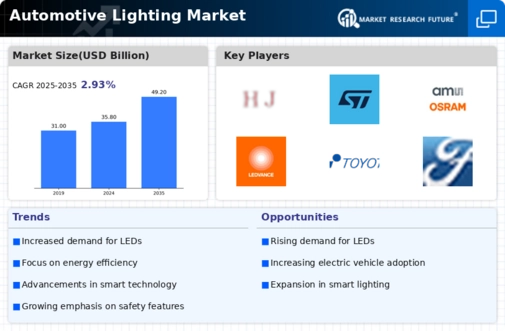
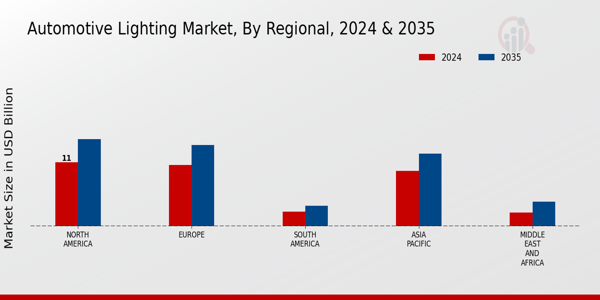
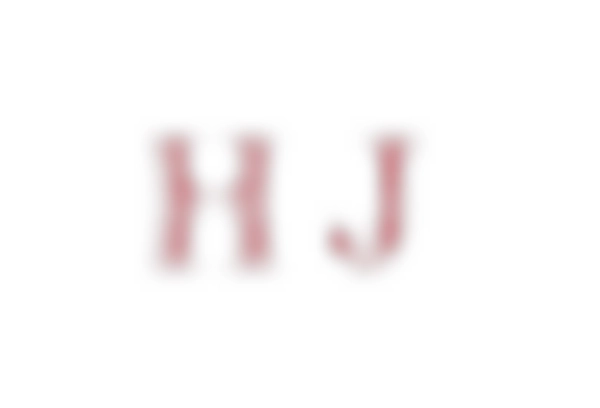
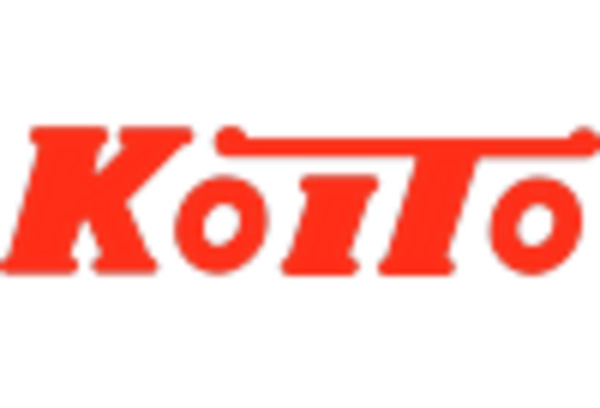
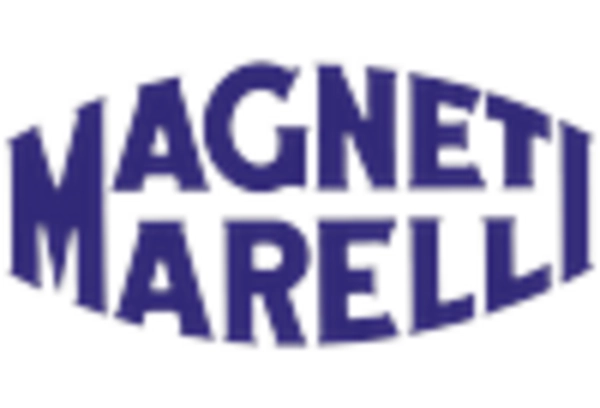
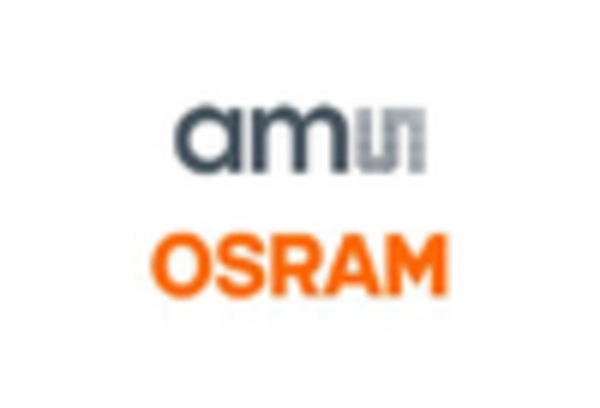
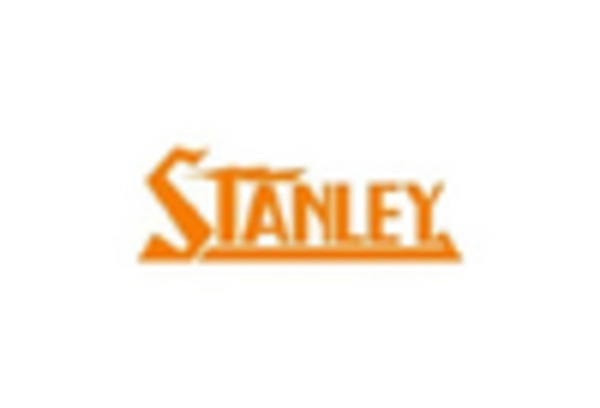
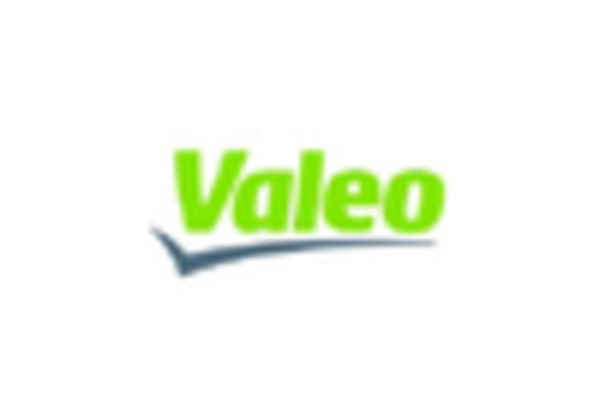

Leave a Comment